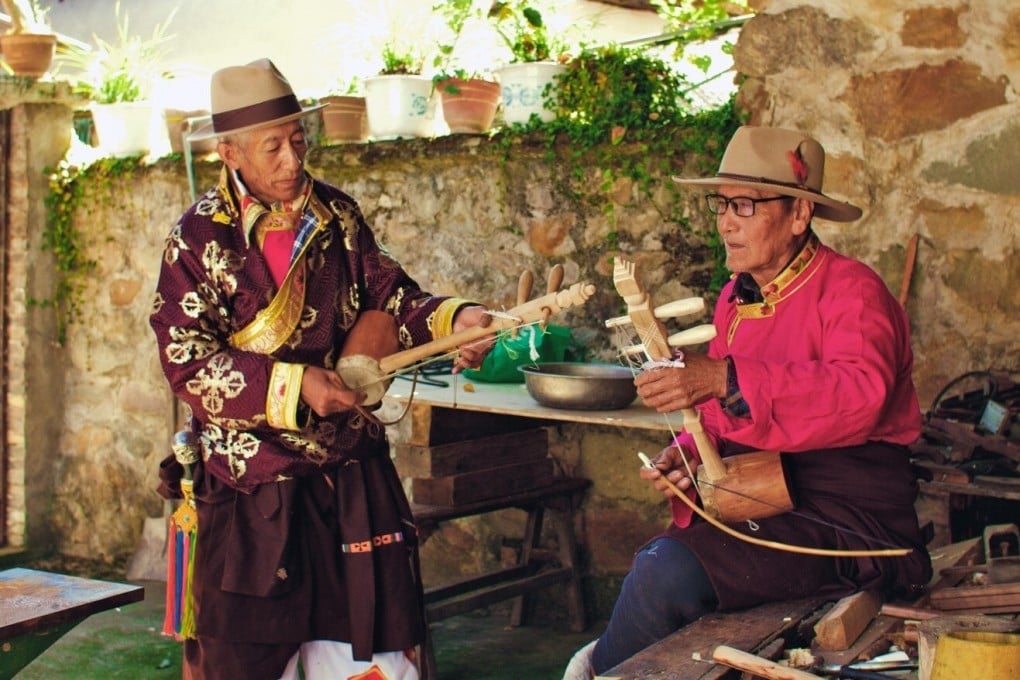Xianzi: the dying art of making Tibetan fiddles by hand
- The fiddle-like xianzi has been part of Tibetan folk culture for centuries. But the number of people who can make the traditional instrument is dwindling
- One of the last xianzi makers in one village can spend hours in the woods looking for the right material

Many people might be familiar with the erhu, a two-stringed Chinese fiddle that sits on the lap. Fewer might know the Tibetan variation, called the xianzi, or piwang.
Like the erhu, the xianzi consists of a long wooden neck and two strings, which are played with a bow. A sound box, usually made with animal skin, sits on the bottom to amplify the sound, which tends to be louder and more high-pitched than that produced by the erhu.
There are few written records of the xianzi’s history, though a fresco at the Jokhang Temple in Lhasa, Tibet’s capital, depicts people playing the instrument. It suggests the xianzi has existed at least since the seventh century, when the temple was built.
An integral part of Tibetan folk life, the xianzi can be heard at festivals, weddings and harvest celebrations – a symbol of appreciation for the small things in life. The instrument can be found wherever there are Tibetan communities, including the provinces of Sichuan and Yunnan in southwestern China.
“There is no sheet music for the Tibetan xianzi,” says Cili Nongbu, a xianzi maker in Yunnan. “Beginners just follow the melody and improvise.”

Cili lives in the Tibetan village of Luotong, where he is one of eight people in the 100-person community who knows how to make the instrument from scratch. The interest began when he was 17.
